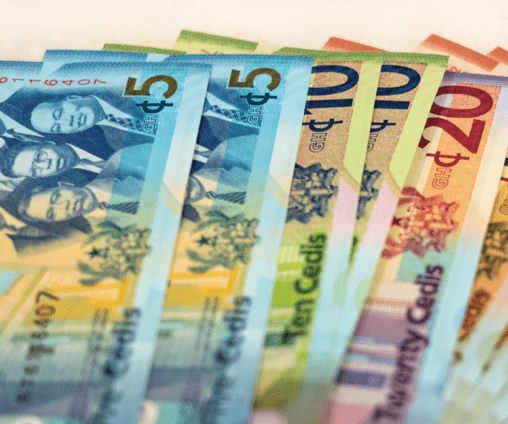By Joshua Worlasi AMLANU ([email protected])
Market analysts anticipate the cedi will continue depreciating against major currencies like the US dollar during the near-term, due to significant fundamental supply-demand imbalances in the forex market.
Analysts from firms including Constant Capital and Databank cite inadequate forex supply and strong demand, particularly from bulk distribution companies, agriculture and manufacturing sectors, as key drivers behind the cedi’s weakness.
Market expectation for the local currency is a further depreciation in the short-term despite improved balance of payments and the central bank prioritising reserve accumulation over FX liquidity support.
Last week, the cedi declined 0.85 percent against the US dollar in the interbank market to GH¢13.80/US$, 1.77 percent against the Euro to GH¢15/Euro, and 2.34 percent against the British Pound to GH¢17.53/GBP. In the spot market, the US$/ GH¢ pair fell sharply by 3.3 percent week-on-week to GH¢14.35/US$.
Edem Nickolas Kporku, an analyst at Constant Capital, forecasts the cedi could fall to around GH¢15.4 to GH¢15.6 per US dollar by end of Q2 2024, factoring-in risk aversion around elections, debt restructuring delays and dwindling reserves.
“I still think that the cedi will continue to depreciate. Even if we still get some inflows to support the cedi, I don’t think it will be enough to reverse the situation we are seeing currently. It should be anywhere in the mid-GH¢15 level. So, maybe GH¢15.4 to GH¢15.6 or thereabouts at end of the second quarter,” the analyst said.
Constant Capital, in its market review, said forex (FX) market dynamics continue to be dominated by inadequate supply and significant demand, hence prompting a weakening outlook for the cedi in the short-term.
“The FX market dynamics continue to be dominated by inadequate supply and significant demand from Bulk Distribution Companies (BDCs) as well as the agricultural and manufacturing sectors. Despite a significantly improved Balance of Payments position over the past year, it appears that the BoG is prioritising bolstering its reserves (or meeting hard targets in the ongoing IMF programme) over supporting FX market liquidity,” Constant Capital said.
Similarly, Databank, an asset management firm, affirmed this position by stating: “This week, however, we expect the local unit to weaken on strong demand”.
The central bank ramped up its market intervention last week, providing about US$59million on the spot market and auctioning US$20million to the BDCs.
This marks the most significant support provided in a week since beginning of the year. This brought about much-needed buoyancy to the cedi, keeping it afloat for most of last week. However, the cedi returned to losses last Friday as corporate demand resurged.
Another anonymous analyst estimates retail forex rates could reach GH¢15.6 per dollar by June if IMF disbursements are further delayed, with the central bank’s mid-rate potentially moving toward GH¢15.3-15.4 to align with the retail market.
“Provided the IMF money comes in sooner those rates might decelerate. But if that rate does not decelerate, then probably at the current level of GH¢14.9 to GH¢15 by end of June 2024, it could hit at least GH¢15.6 based on some estimations that I’m seeing on the retail market.” the anonymous analyst said.
While access to a recently approved US$150million World Bank loan and a potential US$360million IMF disbursement linked to Ghana’s US$13billion debt restructuring could provide support, the outlook remains bearish amid structural imbalances.
The current account was positive throughout last year, albeit at only 1.8 percent of GDP by year-end. Inward remittances grew more than fourfold between the end of March 2023 and year-end. As of end-March 2024, the gross international reserves (GIR) grew by more than US$1 billion year-on-year to US$6.2billion – or 2.8 months of import cover. Excluding encumbered assets and petroleum fund reserves, the GIR grew from US$1.41billion (0.7 months of import cover) to US$4billion at the end of March 2024, an import cover of 1.8 times.










